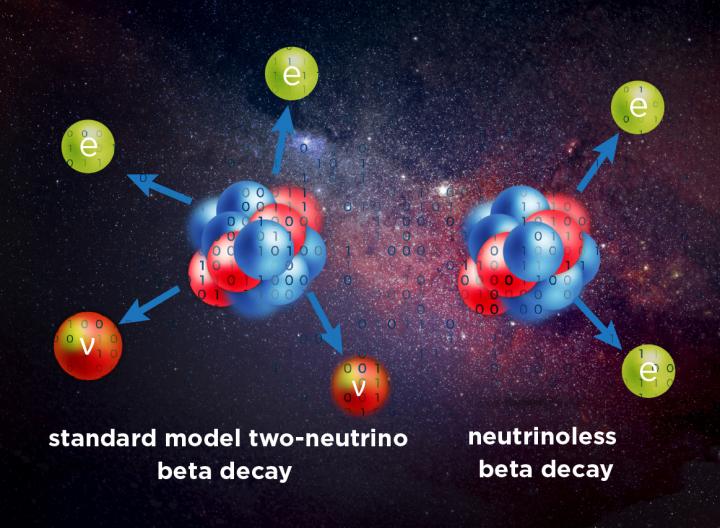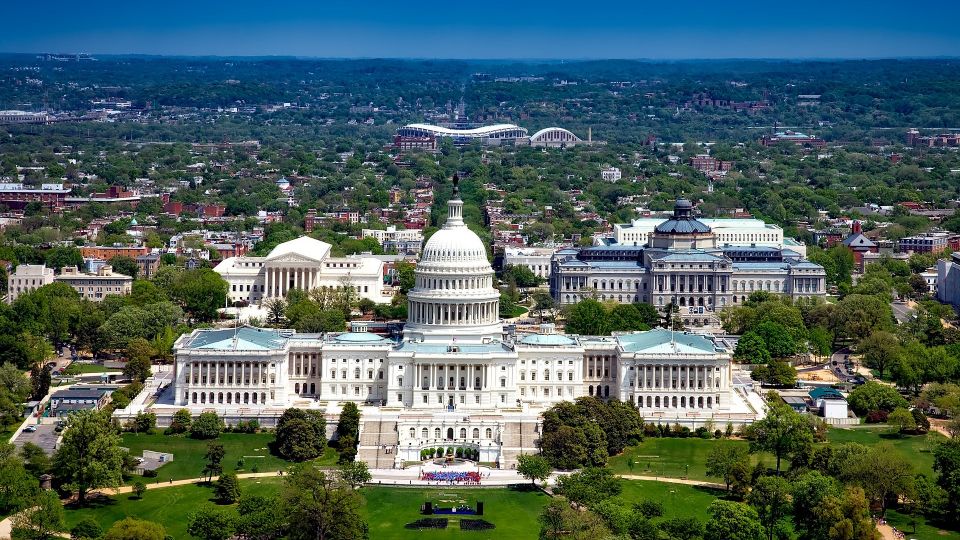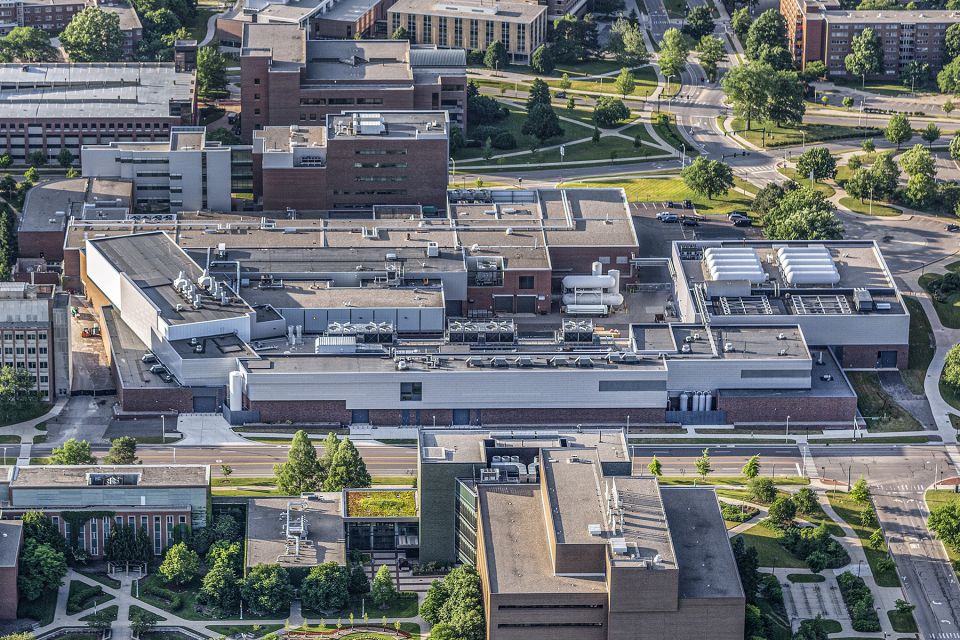
The binary code (1, 0) on the particles in the graphic symbolizes the computer simulations which will be performed to better understand neutrinoless double-beta decay. Certain nuclei decay by emitting electrons (e) and neutrinos (ν), but the existence of a neutrinoless double-beta decay has been hypothesized. Credit: Facility for Rare Isotope Beams
What is neutrinoless double-beta decay? If it exists, it’s when two protons simultaneously transform into neutrons without emitting the two neutrinos that appear in more typical weak-interaction processes. It would be an extremely rare decay, expected to have a half-life greater than 10 septillion years (a 1 with 25 zeroes).
What does it mean? The work marks an important milestone toward a theoretical calculation of neutrinoless double-beta decay rates with fully controlled and quantified uncertainties. Observation of this reaction would demonstrate that neutrinos are their own antiparticles, leading to a possible explanation for why the universe contains more matter than antimatter. The observation would also direct efforts to complete the Standard Model of particle physics.
The research team presented their results in an article recently published in Physical Review Letters.






